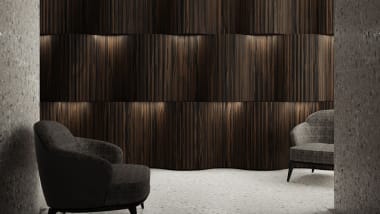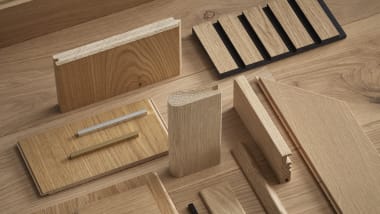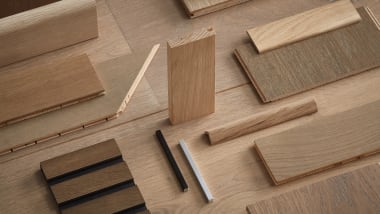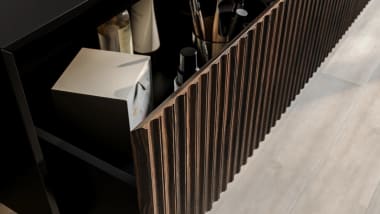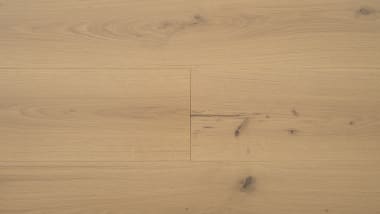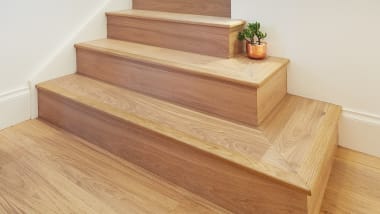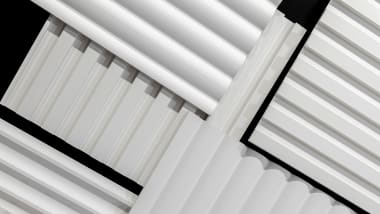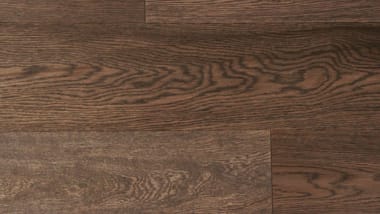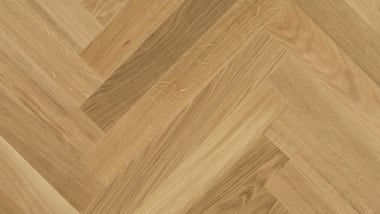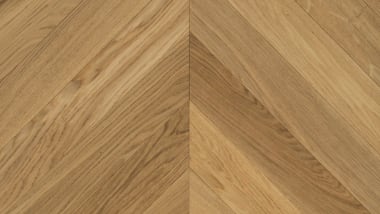Types of Flooring: Explained
20 Aug 2023
Selecting the right flooring for your residential or commercial space should come down to more than just aesthetics. It’s a decision that significantly impacts the functionality, comfort, and even the property value. To ensure you are making an informed choice amidst the many options, it's important to have a thorough understanding of various flooring types and their unique features.
The Importance of Choosing the Right Flooring
Choosing the right flooring is important not only because it will influence the visual appeal of your space but also due to the practical benefits it offers. The right floor type can withstand daily wear, require minimum maintenance, and provide comfort underfoot, among other advantages.
Flooring options range from hardwood and laminate to carpet, tile, and vinyl. Each type comes with distinct characteristics, advantages, and disadvantages, making them ideal for different rooms or applications.
Different rooms call for different flooring, for instance, bathroom floors need to be resistant to spills and moisture, whereas a home office floor should be able to endure the rolling of chairs. For living areas, the flooring needs to balance both aesthetics and durability. Let’s take a look at the different types of flooring available to you.
Havwoods EP110 Blackbutt timber flooring | Elderman Alley St, Speerspoint NSW
Hardwood Flooring
Hardwood flooring is flooring made from real wood. It is one of the most popular and timeless flooring options due to its natural beauty, durability, and ability to add warmth and elegance to any space.When it comes to merging durability with aesthetic appeal, hardwood flooring stands head and shoulders above other flooring types.
The manufacturing process involves cutting solid pieces of hardwood from trees, typically from species like oak, maple, douglas fir, walnut, and others. These pieces are then processed and finished to create flooring planks. There are two main types of hardwood flooring:
Solid Hardwood Flooring: Each plank is made from a single piece of solid wood. It is usually available in various thicknesses and widths.
Engineered Hardwood Flooring: This type of flooring is constructed using several layers of wood. The top layer is made of real hardwood, while the lower layers consist of high-quality plywood or other materials. Engineered hardwood is more resistant to changes in temperature and humidity, making it suitable for areas prone to fluctuations in these conditions. It is also a more eco-friendly choice than solid hardwood flooring as many more planks can be produced from a single tree, resulting in less wastage. Read more about timber and sustainability here.
Both types of hardwood flooring can be finished with various stains and protective coatings to enhance their appearance and protect them from wear and tear. They offer numerous benefits, such as improving indoor air quality, easy maintenance, and adding value to the property.
Hardwood floors are renowned for their long-term durability. Constructed from genuine, high-quality timber, they are designed to withstand heavy foot traffic and the everyday wear and tear that comes with a busy home or commercial space. While other flooring types may show signs of wear over time, hardwood floors tend to look even better with age.
Advantages of Hardwood Flooring
Durability and Longevity: Hardwood floors can last for decades and even increase the value of your property.
Timeless Aesthetic Appeal: The rich, warm aesthetics of wood never go out of style.
Eco-friendly Choice: When sourced responsibly, engineered timber flooring in particular is an incredibly sustainable choice. Timber that is used in construction holds its CO2 instead of releasing it into the atmosphere. Read more about how timber is a sustainable choice here. Timber can also be recycled or reused at the end of it lifetime, unlike many artificial floorings.
Health and wellbeing: It has been shown that incorporating real timber in your interior design scheme has benefits to the mental wellbeing of the occupants - and that this cannot be replicated by imitation products. Timber is also a great choice for improving indoor air quality and hygiene as it does not trap dust or pet dander and is easy to clean and maintain.
Easy Maintenance: Routine sweeping and occasional polishing can keep them looking pristine.
Popular Hardwood Flooring Species: Oak, maple, and walnut are among the most sought-after species due to their durability and attractive grain patterns.
Disadvantages of Hardwood Flooring
Higher Cost: Hardwood is among the more expensive flooring options.
Susceptibility to Moisture Damage: Wood can warp or swell if they are exposed to too much water, incorectly installed, or are not taken care of properly. Installation by a professional is essential.
Ideal Rooms for Hardwood Flooring
Hardwood flooring is ideal for any room other than bathrooms, due to the high moisture content which can damage genuine timber. Hardwood flooring can be perfect for hallways, living areas, kitchens, lounge rooms and bedrooms, often with the use of large, soft rugs to add a touch of colour and texture to the hardwood flooring.
Patterns & Sizes Available for Hardwood Flooring
Hardwood floors are available in a large range of colours and finishes and in a variety of sizes and patterns including timeless herringbone or chevron, opulent versailles, standard planks and wide planks.
Maintenance Tips for Hardwood Floors
Regular sweeping or vacuuming can help maintain the lustre of hardwood floors. For spills, immediate cleaning is recommended to prevent staining or damage.
Felt pads on furniture help to prevent damage and it is recommended to place mats at entryways to aid in preventing dirt being tracked into the space and onto the hardwood flooring.
Laminate Flooring
Laminate flooring is a synthetic product that mimics the appearance of hardwood. It’s a more cost effective option for people who like the look of hardwood but are unable to keep up with maintenance or afford hardwood flooring.
Advantages of Laminate Flooring
Cost-effective Alternative to Hardwood: Laminate is more affordable yet provides a similar aesthetic.
Wide Range of Styles and Designs: It can mimic many different types of wood and finishes.
Easy Installation: The click-and-lock design makes the installation process fast and easy. Keep in mind, many engineered hardwood flooring also have this click-lock system for installation. Solid hardwood flooring does not offer click-lock installation.
Disadvantages of Laminate Flooring
Less Durable than Hardwood: Laminate can wear down over time and show signs of ageing.
Difficult to Repair: Damaged laminate often requires complete replacement.
Susceptible to water damage over time: Over time too much water can cause laminate flooring peel from its base.
Laminate vs Hardwood Flooring
Though visually similar, hardwood is more durable and can often be refinished multiple times, while laminate offers a budget-friendly alternative.
Hardwood floors are an eco-friendly choice over laminate. Many laminate floors contain harmful volatile organic compounds (VOCs) which can be damaging to both the planet and your indoor air quality. Laminate flooring also cannot be recycled or reused at the end of its lifetime as hardwood flooring can.
Installation and Maintenance Tips For Laminate Floors
Laminate floors are best cleaned with a microfiber mop and a laminate floor cleaner. Avoiding water and steam mops can prevent damage.

Carpet Flooring
Carpet flooring is a textile floor covering typically consisting of an upper layer of pile attached to a backing, making it plush and comfortable underfoot.
Advantages of Carpet Flooring
Soft and Comfortable: Carpets provide a cushiony surface, making it comfortable for walking and sitting.
Wide Variety: Carpets are available in numerous colours, patterns, and textures, allowing for complete personalisation of your space.
Insulation and Soundproofing: Carpets can help insulate floors and absorb sound, reducing echo and noise levels.
Disadvantages of Carpet Flooring
Prone to Staining: Carpets can be more susceptible to spills and stains.
Prone to smells: Carpets if not cleaned properly and often can trap smells.
Allergen Accumulation: Carpets can trap dust and allergens, which may affect individuals with sensitivities and allergies.
Ideal Rooms for Carpet Flooring
Carpets are a great choice for bedrooms and living rooms where comfort is a priority.

Types of Carpet Fibres
The most popular carpet fibres are nylon (durable and resistant), polyester (soft and stain-resistant), and wool (luxurious and resilient).
Maintenance Tips for Carpet Floors
Vacuum regularly to remove dust and allergens. For spills, use a carpet-specific cleaner and blot, don't rub the spill.
Tile Flooring
Tile flooring is a hard flooring type made from ceramic, porcelain, or natural stone, commonly used in high-traffic and moisture-prone areas. It’s one of the more durable options for flooring.
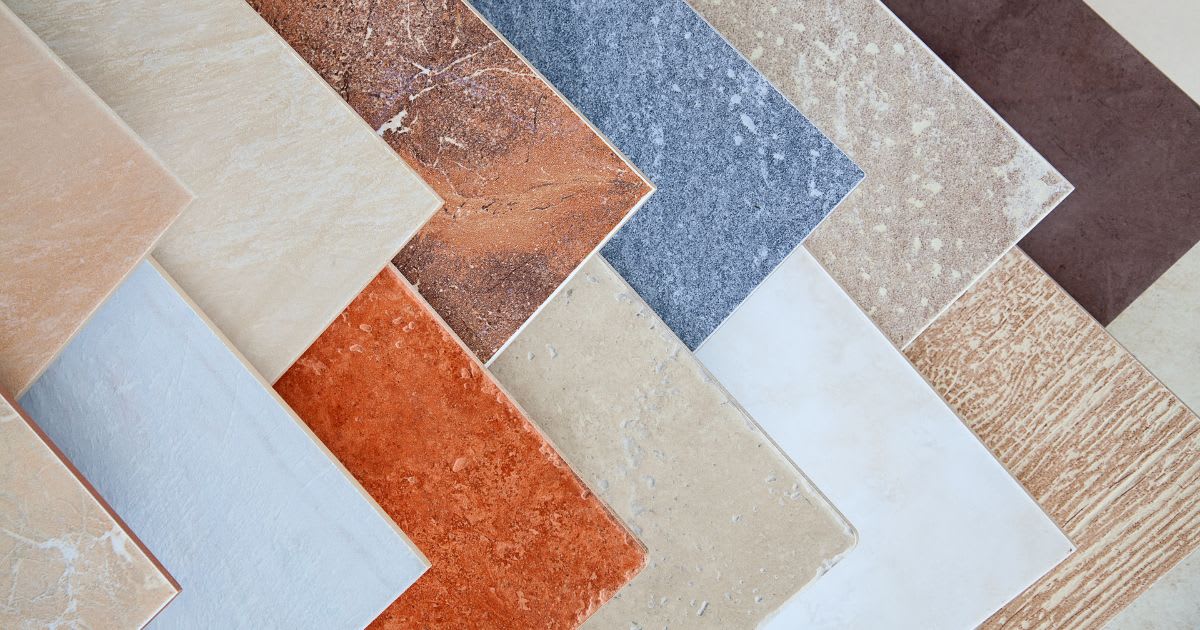
Advantages of Tile Flooring
Durable and Moisture-Resistant: Tiles are highly resistant to water and wear, making them ideal for bathrooms and kitchens.
Versatile Design Options: Tiles come in various shapes, sizes, colours, and patterns.
Easy to Clean: Tile surfaces can be easily swept or mopped clean.
Disadvantages of Tile Flooring
Hard Underfoot: Tiles can be cold and hard underfoot, which may not be comfortable in living or bedroom areas.
Difficult to Install: Tile installation can be challenging and is best left to professionals.
Difficult to remove: Tiles are also difficult to remove if you decide to renovate or remove them during renovations. Hardwood flooring can be installed over the top of an existing tile floor if you are looking to update your space with a beautiful, warm wood floor.
Popular Types of Tile Materials
Ceramic, porcelain, and natural stone like marble and slate are popular material choices for tiles.
Ideal Rooms to Use Tile Flooring
Tile flooring is ideal for bathrooms, kitchens, and laundry rooms due to its water resistance and ease of cleaning.

Maintenance Tips for Tiled floors
Sweep or vacuum regularly to remove debris. Use a damp mop with a mild detergent for a deeper clean.
Vinyl Flooring
Vinyl flooring is a resilient and versatile option that combines the durability of tile with the comfort of carpet.
Advantages of Vinyl Flooring
Affordable and Varied: Vinyl flooring is cost-effective and available in a range of styles that mimic more expensive materials like wood and stone.
Easy Installation and Maintenance: Vinyl floors can be installed easily and are simple to clean.
Water-Resistant: Vinyl is an excellent choice for moisture-prone areas like bathrooms and kitchens.
Disadvantages of Vinyl Flooring
Less Durable: Vinyl can be less durable than other options and prone to scratches and dents.
Comparison with Other Flooring Types: While it is versatile and affordable, vinyl may not increase property value as much as natural materials.
Types of Vinyl Flooring
The two main types are sheet vinyl (large sheets) and luxury vinyl tile or plank (LVT/LVP), which mimic tile and hardwood respectively.
THe best flooring choice for you
The flooring market offers a diverse array of options, each with unique characteristics, advantages, and drawbacks. The best flooring choice for you ultimately depends on your specific needs, aesthetic preferences, and budget. The perfect flooring for your space should not only match your decor but also meet your usage requirements and lifestyle needs. Make careful consideration of factors such as the room's function, the amount of foot traffic, your lifestyle, and maintenance needs.
At Havwoods, we understand that choosing the right flooring for your home is a significant decision. That's why we offer a comprehensive range of hardwood flooring options to cater to diverse needs, preferences, and budgets. Our experts are here to guide you through the process, helping you understand the different hardwood species, finishes, and installation methods.
Whether you're renovating your home or building a new one, our team can help you select the hardwood flooring that best compliments your lifestyle and enhances the beauty of your space. Come and visit one of our showrooms and experience the difference of true quality beneath your feet.
Order Free Samples Online
In the planning and design stage? We have over 200 hardwood flooring products for you to choose from.
Simply explore our products, see a product you like? Click the "add to cart" button. When you are ready, check out and fill in your delivery details and we will pack and send off your samples direct to you at your home or office.
Explore our range of European Oak hardwood flooring products online today and find the perfect product for your project.



